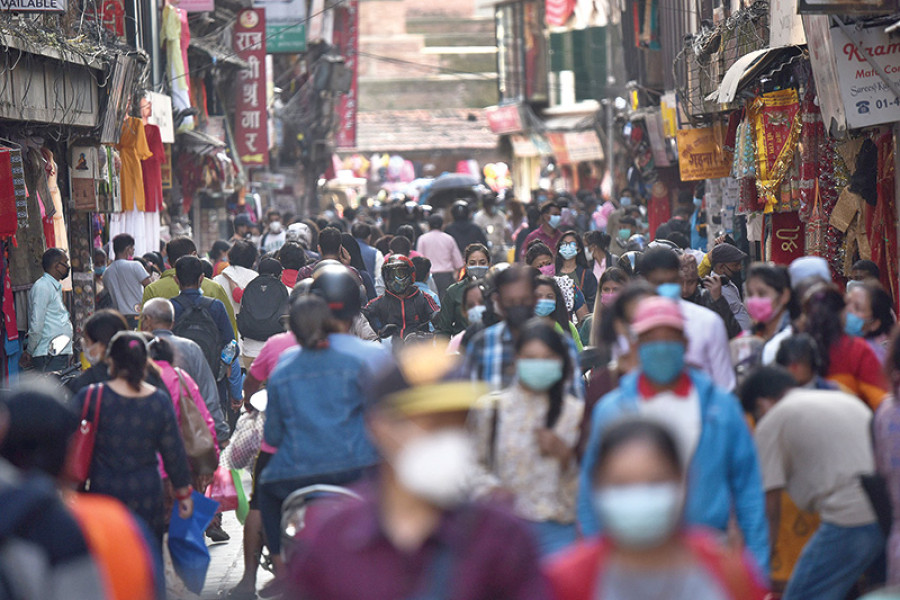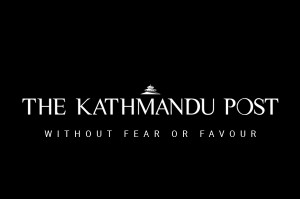Valley
Festive season public mobility in Kathmandu has further raised Covid-19 risk, officials say
Kathmandu Metropolitan City officials are already struggling to keep track of the infected and the people who have come into their close contact.
Anup Ojha
The number of people visiting the shopping areas of Kathmandu for the festival shopping has gone up dramatically in recent days, raising alarm among the officials who fear the city’s coronavirus crisis could further intensify.
The ten-day long festival kicks off on Saturday and with the shopping crowd getting larger by the day, the authorities are at a loss as to how to contain the virus that has been spreading rapidly in Kathmandu Valley.
Government records show nearly 60 percent of the positive cases are being reported from the Valley these days. Health officials worry the festival crowd is only going to make the situation worse.
The areas like Ason, New Road, Khichapokhari, Bhotahiti and Indra Chowk are now full of festival shoppers these days and authorities have no way of enforcing mandatory mask and physical distancing rules.
According to the records kept by the Public Health Division of Kathmandu Metropolitan City, 16,733 people in the city have been infected with the coronavirus as of Wednesday. The records also show that 6,670 infected people are in home isolation in the city alone.
"Mass mobility of people during the Dashain season is bound to push the infection numbers even higher,” said Gyan Bahadur Oli, the Covid-19 focal person for KMC.
The division is already struggling to keep track of the virus spread, the infected people and the people who have come to their close contact. It has managed to trace only 25,451 people so far.
"If a person is infected and he or she goes to Ason, Mahaboudha or New Road for shopping and travels to Rukum or Accham for the festival, how are we going to trace the person and the people who came in close contact with them," said Oli.
Ever since the government opened the long route vehicles last month, the situation is getting difficult, and doctors have long been saying that this will only increase the risk of the virus spreading to remote villages of the country from Kathmandu.
Dr Sher Bahadur Pun, virologist at Sukraraj Tropical and Infectious Disease Hospital at Teku, said the Dashain crowd has put thousands of people at risk.
"People with conditions such as diabetes and high blood pressure, cancer patients, pregnant women and elderly people are particularly at risk. These risk groups and their families should be extra cautious," he said.
Sajana Maskey, a resident of Ason, is worried about her grandparents.
“It’s very dangerous for us to come out of the house because you don’t find any space to walk freely. There is a risk of the virus transmission and I have ageing grandparents at my house,” the 25-year-old said.
Her fear has only exacerbated after she recently learned that her nextdoor family contracted the virus.
“We only get out of our house in the morning. Throughout the day, it is too risky to get out,” Maskey said.
Chin Kaji Maharjan, ward chairman of KMC-22 which includes the New Road area, admitted that the situation has become hopeless.
“Things have gone out of control,” he told the Post over the phone. “The government has done little to address the situation. The ward offices do not have the resources to fight the pandemic.”
Maharjan said when there were only two positive cases in the country, the government imposed a long nationwide lockdown which went on for four months. “Now, the coronavirus infection has become widespread and the people are moving freely. It’s difficult to escape from the virus,” he said.




 16.12°C Kathmandu
16.12°C Kathmandu.jpg)









%20(1).jpg&w=300&height=200)

